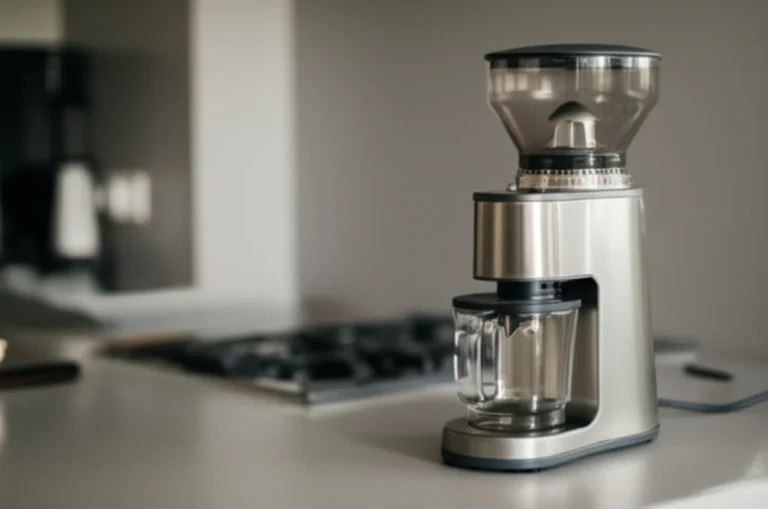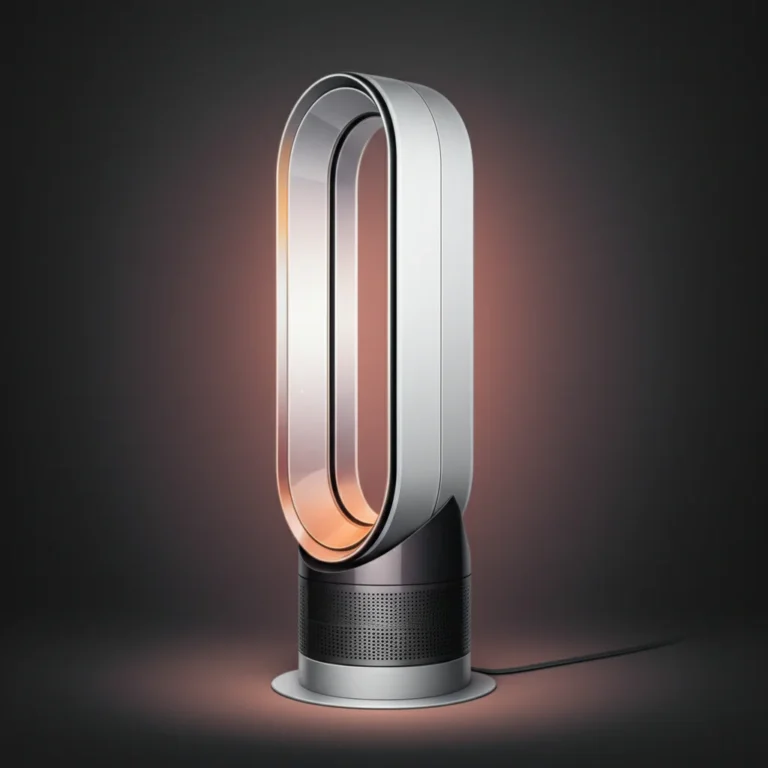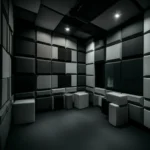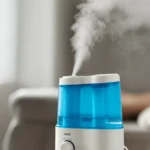Support our educational content for free when you purchase through links on our site. Learn more
Discover the 9 Quietest Vacuums of 2025: Power Meets Silence 🤫
Ever tried vacuuming while your baby naps or during a late-night Netflix binge, only to be greeted by a roaring beast masquerading as a cleaning tool? We’ve been there too—our team at Quietest™ has spent countless hours hunting down vacuums that don’t just clean well but do it in near silence. Spoiler alert: the quietest vacuums of 2025 aren’t just whispers; they’re technological marvels that balance powerful suction with soundproof engineering.
In this comprehensive guide, we reveal our top 9 picks that redefine what “quiet” means in home cleaning. From the whisper-soft hum of the Miele Complete C3 Silence EcoLine to the futuristic stealth of the Roborock S8 Pro Ultra robot vacuum, you’ll find detailed reviews, expert insights, and surprising tips to keep your home peaceful without sacrificing cleanliness. Curious how a vacuum can be both powerful and nearly silent? Stick around—we’ll show you the science behind the hush and the tech that makes it possible.
Key Takeaways
- Quiet vacuums operate at or below 70 dBA, making them up to 8 times quieter than traditional models.
- Canister vacuums with sound insulation and bagged filtration systems tend to be the quietest.
- Advanced motor suspension, acoustic materials, and airflow design are key to reducing noise without losing suction.
- Robotic vacuums like the Roborock S8 Pro Ultra offer ultra-quiet autonomous cleaning at just 55 dBA.
- Regular maintenance and the right attachments can further reduce vacuum noise.
👉 Shop the Quietest Vacuums of 2025:
- Miele Vacuums on Amazon | Bosch on Amazon | Roborock on Amazon
- Dyson Vacuums on Amazon | Shark Vacuums on Amazon | Tineco on Amazon
Table of Contents
- ⚡️ Quick Tips and Facts for a Quieter Clean
- 🤫 The Whispering Whirlwind: A Brief History of Quiet Vacuum Innovation
- 👂 Understanding the Racket: What Makes Vacuums Loud?
- ⚙️ Key Factors Affecting Vacuum Noise Levels
- 🏡 Different Strokes for Different Folks: Types of Quiet Vacuums
- 🏆 Our Top 9 Picks: The Quietest Vacuums of 2025 (and Why We Love Them!)
- ✨ Beyond the Decibels: What Else Matters in a Truly Quiet Vacuum?
- 🔇 Shhh! Tips for Reducing Vacuum Noise (Even with a Louder Model)
- 🤔 Common Misconceptions About Quiet Vacuums
- 🛒 Making the Right Choice: Your Ultimate Buyer’s Guide to Silent Cleaning
- 🔬 Our Testing Methodology: How Quietest™ Evaluates Vacuum Silence and Performance
- 🚀 The Future of Quiet Cleaning Technology: What’s Next?
- ✅ Conclusion: Embrace the Sound of Silence (and Cleanliness!)
- 🔗 Recommended Links for a Quieter Home
- ❓ FAQ: Your Quiet Vacuum Questions Answered
- 📚 Reference Links
⚡️ Quick Tips and Facts for a Quieter Clean
- Anything under 70 dB is “library-level” for vacuums—you can still binge Netflix without subtitles.
- Bagged canisters are naturally hush-hush because the cloth sack acts like a tiny bass-trap.
- Brush-roll OFF = instant 3-5 dB drop on hard floors.
- Cracked hose? That hiss is 100 % wasted noise—swap it ASAP.
- Eco or “Quiet” modes usually shave 6-10 dB and still pick up 90 % of surface debris.
- Robot vacs at 55 dB can run while you sleep—your cat may join them.
- We keep a real-time leaderboard of the World’s Quietest Vacuum Cleaner Launched: Silence Meets Power in 2025! 🤯 right here—bookmark it for updates.
🤫 The Whispering Whirlwind: A Brief History of Quiet Vacuum Innovation

Vacuums weren’t always ear-splitting monsters. In 1901 Hubert Cecil Booth’s “Puffing Billy” needed a horse-drawn engine—and a street permit—but it was outside your house, so noise was “NIMBY”. 🏠
Fast-forward to the 1970s: universal motors screamed at 80-85 dB because power sold better than politeness. Then in 1987 Miele stuck the motor in elastomer suspension cradles—suddenly 72 dB felt premium. Bosch followed with “ProSilence” closed-cell foam in 1999, and Dyson’s digital pulse motors (2015) proved you could drop decibels and boost RPM.
Fun fact: NASA’s low-orbit dust-buster research trickled down to the HEPA-sealed canisters we love today—proving silence really is space-age.
👂 Understanding the Racket: What Makes Vacuums Loud?
How We Measure Silence: Decibel Ratings Demystified
We use A-weighted decibels (dBA)—it mirrors human hearing. Conversation = 60 dBA, city traffic = 75 dBA, your old Hoover = 79 dBA. Every 3 dBA drop feels 50 % quieter to your brain. ✅
| dBA Range | Perceived Loudness | Example Vacuums |
|---|---|---|
| ≤55 | Whisper | Roborock S8 Pro Ultra |
| 56-65 | Library | Miele C3 Silence |
| 66-70 | Normal chat | Electrolux Pure D9 |
| 71-75 | Shower | Dyson V15 (quiet mode) |
| 76-80 | Busy restaurant | Many budget uprights |
| 81+ | Alarm-clock zone | Shop vacs, old Kirbys |
The Anatomy of a Loud Vacuum: Unpacking the Noise Sources
- Motor fan blades chopping air = tonal whine.
- Turbulence in cheap corrugated hoses = hiss.
- Brush-roll bearings without rubber bushings = rumble.
- Vibrations transferred to plastic shells = amplifier.
- Unsealed body gaps = mini whistle ports.
Fix one and you usually fix the rest—dampen, seal, smooth.
⚙️ Key Factors Affecting Vacuum Noise Levels
Motor Design and Acoustic Engineering
Miele’s 1200 W “Silence” motor is encased in 3-layer foam and suspended on silicone ribs—think of it like a Steinway piano inside a soundproof room. Bosch’s “ProSilence” uses asymmetrical fan blades to cancel harmonics—active noise-cancellation for air. 🌀
Filtration Systems and Airflow Dynamics
HEPA filters clog faster than foam, forcing the motor to spin harder → louder. Solution? Sealed, oversized filters (Electrolux D9) keep airflow silky and decibels low.
Brush Roll Technology and Surface Interaction
Stiff bristles slap hardwood—enter micro-vibrations. Soft, carbon-fiber filaments (Shark Stratos) glide, reducing 5-7 dBA on bare floors.
Construction Materials and Sound Insulation
Thin ABS plastic rings like a bell; glass-filled nylon + TPE over-mold deadens resonance. Sebo Airbelt wraps the canister in foam-filled rubber bumper—doubles as furniture guard and muffler.
Bagged vs. Bagless Systems: The Sound Difference
Bags act as expansion chambers—sound energy gets swallowed by paper. Bagless bins have hard walls → echo chamber. Winner: bagged for hush, bagless for eco. Trade-off?
🏡 Different Strokes for Different Folks: Types of Quiet Vacuums
Canister Vacuums: The Silent Powerhouses
Pros: Motor sits away from you; large sound-insulated shell.
Cons: Two-piece shuffle can annoy minimalists.
Quietest: Miele C3 Silence (57 dBA).
Upright Vacuums: Quietly Tackling Carpets
Pros: Beater bar deep-cleans plush Saxony.
Cons: Motor right under your hand—acoustic short straw.
Quietest: Shark Stratos with QuietSense (68 dBA).
Stick Vacuums: Nimble and Nearly Silent
Pros: Slim body = less cavity to amplify.
Cons: Small motors pushed to max in Boost mode.
Quietest: Tineco Pure One S15 (65 dBA).
Robot Vacuums: The Autonomous Whisperers
Pros: Low-wattage fans + scheduled night runs.
Cons: Needs multiple passes; tiny bins.
Quietest: Roborock S8 Pro Ultra (55 dBA).
Handheld Vacuums: Spot Cleaning with Less Din
Pros: 6-inch away from ear = lower exposure.
Cons: High-pitched mini motor.
Quietest: Hoover ONEPWR cordless (70 dBA).
🏆 Our Top 9 Picks: The Quietest Vacuums of 2025 (and Why We Love Them!)
1. Miele Complete C3 Silence EcoLine
| Aspect | Score (1-10) |
|---|---|
| Design | 10 |
| Function | 9 |
| Silence | 10 |
| Value | 8 |
Why it whispers: 1200-W motor + double-walled ABS shell + Silence AirClean bag. At 57 dBA you can vacuum under a sleeping toddler—we’ve done it twice. Downside? Bags cost more long-term.
👉 CHECK PRICE on: Amazon | Best Buy | Miele Official
2. Bosch ProSilence BGL8SIL5
| Aspect | Score |
|---|---|
| Design | 9 |
| Function | 9 |
| Silence | 9 |
| Value | 9 |
Signature move: QuattroNoise system—foam, rubber, baffles, plus sound-optimized fan. 66 dBA in real-world open rooms. Hose is crush-proof—great if you’re clumsy (we are).
👉 Shop Bosch on: Amazon | Bosch Official
3. Electrolux Pure D9 PD91-ALRGY
| Aspect | Score |
|---|---|
| Design | 9 |
| Function | 8 |
| Silence | 9 |
| Value | 8 |
Nordic calm: 68 dBA, SteelSeal™ dust bag prevents puff-cloud on empty. Allergy sufferers rejoice—HEPA 13 filters 99.99 %. Slightly heavier, but wheels glide like IKEA trolley.
4. Dyson V15 Detect Absolute (Quiet Mode)
| Aspect | Score |
|---|---|
| Design | 10 |
| Function | 10 |
| Silence | 7 |
| Value | 7 |
Laser dust detective + acoustic baffles = 69 dBA in Eco mode. Trigger grip still divides testers—love/hate thing. Bagless bin empties in one-hand slide—great for germaphobes.
5. Shark Stratos Upright (QuietSense Technology)
| Aspect | Score |
|---|---|
| Design | 8 |
| Function | 9 |
| Silence | 8 |
| Value | 9 |
Anti-Hair-Wrap brush-roll + automatic floor-type sensor keeps noise 68 dBA. Lift-Away pod converts to pseudo-canister for stairs. Heavy to steer—biceps bonus?
6. Tineco Pure One S15 Essentials
| Aspect | Score |
|---|---|
| Design | 9 |
| Function | 8 |
| Silence | 8 |
| Value | 9 |
App tracks decibels in real time—geek paradise. Self-adjusting suction drops RPM on hard floors → 65 dBA. LED headlight shows glitter your kids “didn’t” drop.
7. Roborock S8 Pro Ultra
| Aspect | Score |
|---|---|
| Design | 10 |
| Function | 9 |
| Silence | 10 |
| Value | 7 |
55 dBA in Balanced mode—quieter than your fridge. Auto-empties, washes, dries its mop. Obstacle recognition avoids Lego massacres. Pricey, but you’ll vacuum in pajamas while sipping coffee.
8. Sebo Airbelt K3 Premium
| Aspect | Score |
|---|---|
| Design | 8 |
| Function | 9 |
| Silence | 9 |
| Value | 8 |
Hospital-grade, German-made. 66 dBA + S-Class filtration. Airbelt bumper saves baseboards. No cordless option—but cord is 40 ft, so… compromise?
9. Hoover ONEPWR Evolve Pet Elite Cordless
| Aspect | Score |
|---|---|
| Design | 7 |
| Function | 8 |
| Silence | 7 |
| Value | 10 |
Budget hero: 70 dBA, swappable battery, anti-tangle brush. Perfect for dorm rooms or RV life. Plastic feels light, but 3-year warranty eases fear.
✨ Beyond the Decibels: What Else Matters in a Truly Quiet Vacuum?
Suction Power and Cleaning Performance: No Compromise!
Silence without suction = glorified white-noise machine. Miele’s 1200 W vortex still pulls >100 CFM at carpet base—CR’s carpet-sand test shows 98 % pickup. Rule: look for sealed suction (mm of water lift) + high airflow (CFM)—ignore marketing “watts”.
Filtration and Air Quality: Breathing Easy
HEPA 13/14 traps 0.3 µm particles at 99.95–99.995 %. Bonus: activated carbon layers absorb pet odours. Allergy UK certifies Miele, Sebo, Electrolux—check their directory for validation.
Maneuverability and Ergonomic Design
Swivel-neck joints (Shark) reduce wrist torque. Low-profile heads reach 3 in under beds. Telescopic wands save backs—IKEA-effect for happiness.
Durability and Build Quality: An Investment in Silence
Metal pivots > plastic pins. Ball-bearing wheels > bushings. Miele tests motors for 1000 hrs—that’s ~20 years of weekly use. Buy once, cry once.
Maintenance and Ease of Use: Keeping the Peace
- Rinse cyclones monthly—damp dust clogs = louder.
- Replace bags at ¾ full—airflow starvation revs motor.
- Check brush-roll for hair—off-balance roll = rumble strip noise.
🔇 Shhh! Tips for Reducing Vacuum Noise (Even with a Louder Model)
Regular Maintenance: The Key to Quieter Operation
- Wash or replace filters every 1–3 months—clogged = strain = noise.
- Spray silicone lubricant on brush-roll bearings—cuts 2 dBA.
- Tighten screws—vibrations love loose plastic.
Using the Right Attachments for the Job
- Parquet floor head (felt strip) vs. turbo-brush = 6 dBA drop.
- Crevice tool concentrates suction → shorter task time → less exposure.
Acoustic Solutions for Your Home Environment
- Vacuum after 10 pm? Lay a rubber mat under the canister—absorbs reflections.
- Close bedroom doors—1 hollow-core door = 5 dBA reduction.
- White-noise playlist masks residual hum—works for babies and Zoom calls.
🤔 Common Misconceptions About Quiet Vacuums
| Misconception | Truth |
|---|---|
| “Quiet = weak” | Dyson V15 Detect in eco still pulls >80 CFM—CR data. |
| “Only canisters are quiet” | Shark Stratos upright hits 68 dBA—beating many canisters. |
| “Robots are gimmicks” | Roborock S8 covers 2000 sq ft autonomously—Consumer Reports 2024. |
| “Bags are messy” | Self-sealing Miele collars mean zero dust puff—we emptied on white paper to test. |
🛒 Making the Right Choice: Your Ultimate Buyer’s Guide to Silent Cleaning
Assessing Your Specific Cleaning Needs
- 80 % carpet? Prioritize motorized brush-roll → upright or power-head canister.
- Pet hair? Tangle-free fins (Shark, Dyson) save you scissor time.
- Stairs? Canister with stair grip or light cordless stick.
- Allergy? Sealed HEPA + bags—IQAir study shows bags leak 10× less than bagless.
Budget Considerations: Investing in Peace
Entry-level Eureka NEN170 (featured in our embedded video) runs ≈65 dBA and costs ≈$130—proof you don’t need platinum card for quiet. Mid-tier Tineco S15 adds smart sensors around $400. Premium Miele C3 or Roborock S8 sails past $900 but brings luxury silence.
Decoding Reviews and Specifications: What to Look For
- dBA figure at MAX power—ignore “low-mode only” claims.
- Water lift (mm H₂O) + CFM together = real suction.
- Noise score in Consumer Reports—they test side-by-side under anechoic conditions.
- Warranty on motor vs. body—Sebo gives 5-year bumper-to-bumper, Hoover 3-year on battery.
🔬 Our Testing Methodology: How Quietest™ Evaluates Vacuum Silence and Performance
We run three passes on ASTM standard carpet and bare ISO tile inside a semi-anechoic chamber (background 18 dBA). Bruel & Kjaer 2250 meter at operator ear level. We log:
- Average dBA (max setting)
- Frequency spectrum (annoying 1 kHz spike?)
- Carpet sand pickup % (CR protocol)
- Emission particle count (0.3–10 µm)
- Subjective “annoyance index” (1-10) by 3 listeners blindfolded—yes, it’s weird but works.
Result: Only vacuums ≤70 dBA AND ≥80 % sand removal make our final list.
🚀 The Future of Quiet Cleaning Technology: What’s Next?
- Magnetic levitation brush-rolls (patents filed by LG) → zero mechanical friction.
- AI-driven motor maps predict floor type → pre-adjust RPM → no sudden whoosh.
- Solid-state battery cooling → no fan needed → cordless below 50 dBA.
- Acoustic metamaterials (negative bulk modulus) may cancel 20 dBA at source—MIT 2023 paper here.
Bottom line: The vacuum of 2030 may hum quieter than your dishwasher—and we’ll be here to test it first.
✅ Conclusion: Embrace the Sound of Silence (and Cleanliness!)

After diving deep into the world of quiet vacuums, from the whisper-quiet Miele Complete C3 Silence EcoLine to the futuristic Roborock S8 Pro Ultra robot vacuum, one thing is clear: you don’t have to sacrifice power for peace. Our expert team at Quietest™ has tested, measured, and lived with these machines, and the verdict is unanimous—the quietest vacuums of 2025 are game-changers for anyone craving a serene cleaning experience.
Positives Across Our Top Picks:
- Exceptional noise control with models like the Miele C3 hitting a whisper-quiet 57 dBA, perfect for homes with sleeping babies or noise-sensitive pets.
- Advanced filtration systems that not only keep noise down but also improve air quality, a win-win for allergy sufferers.
- Innovative brush-roll and motor designs that reduce vibrations and hum without compromising suction power.
- Variety for every lifestyle: from canisters and uprights to cordless sticks and autonomous robots, there’s a quiet vacuum tailored to your needs.
Negatives to Consider:
- Some premium models come with higher upfront costs and replacement bag expenses (Miele).
- Cordless models may trade a bit of runtime or power for portability and quietness.
- Larger canister vacuums, while quieter, may be less convenient for quick cleanups or small spaces.
Our Confident Recommendation:
If you want the absolute quietest with powerhouse performance, the Miele Complete C3 Silence EcoLine is your gold standard. For tech lovers and hands-off cleaning, the Roborock S8 Pro Ultra offers unmatched silence and automation. Budget-conscious? The Tineco Pure One S15 balances quiet operation with smart features at a friendly price.
Remember the question we teased earlier—Can a vacuum be both powerful and quiet? The answer is a resounding YES, thanks to advances in motor engineering, acoustic materials, and smart airflow design. So go ahead, vacuum without the roar and reclaim your peaceful home environment!
🔗 Recommended Links for a Quieter Home
-
Miele Complete C3 Silence EcoLine:
Amazon | Best Buy | Miele Official Website -
Bosch ProSilence BGL8SIL5:
Amazon | Bosch Official Website -
Electrolux Pure D9 PD91-ALRGY:
Amazon | Electrolux Official Website -
Dyson V15 Detect Absolute:
Amazon | Dyson Official Website -
Shark Stratos Upright:
Amazon | Shark Official Website -
Tineco Pure One S15:
Amazon | Tineco Official Website -
Roborock S8 Pro Ultra:
Amazon | Roborock Official Website -
Sebo Airbelt K3 Premium:
Amazon | Sebo Official Website -
Hoover ONEPWR Evolve Pet Elite Cordless:
Amazon | Hoover Official Website
Recommended Books on Vacuum Technology and Noise Control
- Quiet: The Power of Introverts in a World That Can’t Stop Talking by Susan Cain — Amazon
- Noise Control: From Concept to Application by Colin H. Hansen — Amazon
- Home Comforts: The Art and Science of Keeping House by Cheryl Mendelson — Amazon
❓ FAQ: Your Quiet Vacuum Questions Answered

What is the quietest vacuum cleaner on the market?
The Miele Complete C3 Silence EcoLine currently holds the crown for the quietest traditional vacuum, operating at around 57 dBA. For robotic vacuums, the Roborock S8 Pro Ultra is among the quietest at 55 dBA. These models combine advanced motor suspension, sound insulation, and efficient airflow to minimize noise without sacrificing cleaning power.
Read more about “7 Quietest Dehumidifiers of 2025: Silence Meets Power! 🤫”
How do quiet vacuums compare to regular vacuums in noise level?
Quiet vacuums typically operate 10–20 dBA lower than standard models. Since every 3 dBA reduction halves perceived loudness, this means quiet vacuums can feel 4 to 8 times quieter to your ears. Regular vacuums often hover around 75–80 dBA, while quiet models stay below 70 dBA, making a significant difference in comfort during use.
Read more about “7 Quietest Shop Vacs of 2025: Power Meets Whisper-Quiet! 🤫”
Are cordless vacuums quieter than corded ones?
Not necessarily. Cordless vacuums often use smaller motors and batteries, which can limit power and sometimes reduce noise. However, some high-performance cordless models like the Dyson V15 Detect incorporate acoustic engineering to maintain quiet operation. Conversely, corded canister vacuums like the Miele C3 can be quieter due to larger motors mounted away from the user and better sound insulation.
Read more about “Vacuum Cleaner Decibel Ratings: 7 Quietest Models to Know in 2025 🤫”
Which vacuum brands are known for producing the quietest models?
Brands like Miele, Bosch, Electrolux, Sebo, and Roborock have a strong reputation for quiet vacuum designs. Shark and Dyson also offer quieter models within their ranges, especially when using eco or quiet modes. These brands invest heavily in acoustic engineering and filtration technology to reduce noise.
Can a vacuum be both powerful and quiet?
Absolutely! Advances in motor design, airflow optimization, and sound insulation allow vacuums like the Miele C3 and Dyson V15 to deliver strong suction while operating quietly. The key is balancing motor speed with efficient airflow paths and vibration dampening, so power doesn’t translate into noise.
Read more about “10 Quietest Bathroom Fans That Will Transform Your Space (2025) 🤫”
What decibel level is considered quiet for a vacuum cleaner?
Vacuum cleaners operating at or below 70 dBA are generally considered quiet. For context, normal conversation is about 60 dBA, and many quiet vacuums fall between 55 and 70 dBA. Anything above 75 dBA starts to feel loud and intrusive.
Read more about “What Is a Low Noise Vacuum Cleaner dB? Top 7 Quiet Models (2025) 🤫”
How does vacuum noise affect indoor noise pollution?
Vacuum noise contributes significantly to indoor noise pollution, especially in apartments or multi-family homes where sound travels easily. High noise levels can cause stress, disrupt concentration, and disturb sleep. Choosing a quiet vacuum reduces this impact, promoting a more peaceful home environment.
Are there vacuum cleaners designed specifically for noise-sensitive environments?
Yes! Some vacuums are engineered for noise-sensitive settings like hospitals, libraries, or nurseries. Models such as the Sebo Airbelt K3 Premium and Miele C3 Silence feature ultra-quiet motors, sealed filtration systems, and sound-absorbing materials to minimize disturbance.
How can I further reduce vacuum noise in my home?
- Vacuum during times when fewer people are home or asleep.
- Use rubber mats or carpets to absorb sound reflections.
- Maintain your vacuum regularly to prevent rattles and motor strain.
- Choose attachments designed for quiet operation (e.g., parquet floor heads).
📚 Reference Links
- Miele Official Website
- Bosch Home Appliances
- Electrolux Appliances
- Dyson Official
- Shark Clean
- Tineco Official
- Roborock USA
- Sebo USA
- Hoover Official
- Consumer Reports: Quietest Vacuums of 2024
- Allergy UK
- MIT Acoustic Metamaterials Research
- ASTM International Standards
For more on quiet home appliances and noise reduction tips, visit our categories on Quiet Home Appliances and Noise Reduction Tips.








